The Technology cluster showcases many of the amazing technological advances made by Muslim scholars and engineers. Working replicas of the giant Elephant Water Clock and Castle Clock of the famous Muslim engineer, al- Jazari, are displayed in this cluster. The exhibit has examples of innovative water-raising machines and ingenious mechanical devices.
Animated scale models of an ancient Wind Mill and Wind Tower demonstrate pioneering methods of harnessing the power of nature. A range of interactive exhibits and displays on trade, trade routes, commodities, currencies and economics trace the origins of industry in the Islamic world.

The Elephant Water Clock is an iconic example of one of al-Jazari’s pieces of fine technology. In addition to telling the time, it celebrates the universality of Islam by incorporating elements from Spain, Phoenicia, Egypt, Iraq, India and China.
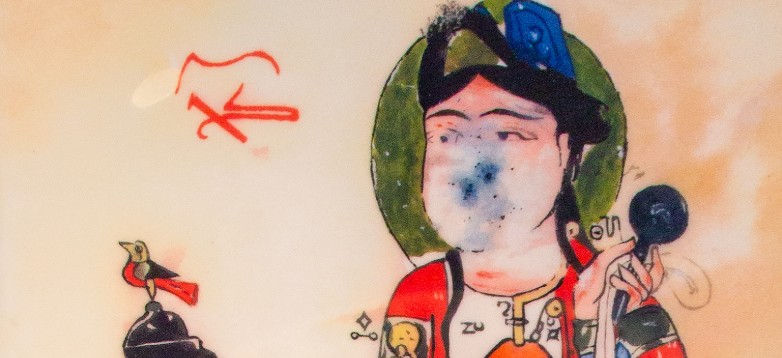
One of the many robots or automatons that al-Jazari made for the Kings of Diyarbakr was the ‘Robotic Man’. This robot, which is modeled on a 12-year old boy, provides water, a towel and a comb for the King during his ablutions.
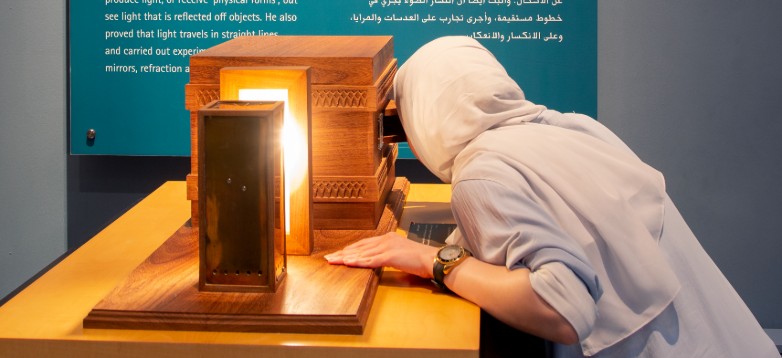
Ibn al-Haitham is widely regarded as the Father of Optics. Based on his study of the human eye, he created the first Pinhole Camera, which demonstrated that light travels in straight lines.
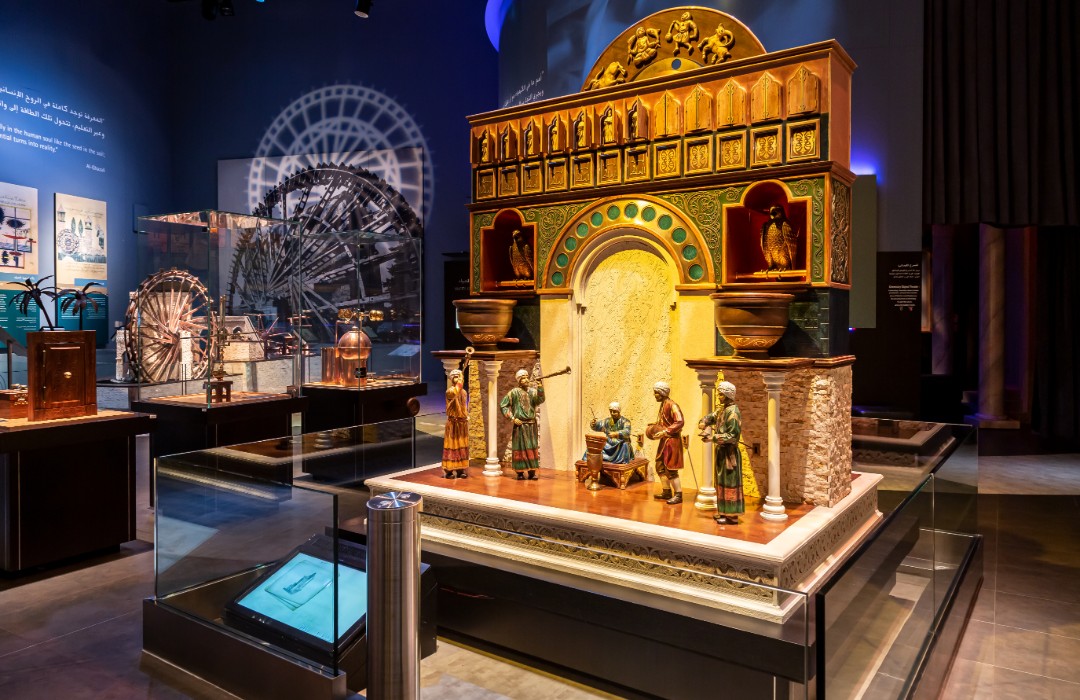
The Castle Clock is another example of one of al-Jazari’s famous Water Clocks. In this Clock, a ball drops from the falcons’ beaks into the vases, small doors open and close, a moon moves across the face of the Clock, and the musicians play their instruments every hour. The mechanism can be seen on the back of the Clock.
This dynamic scale model display depicts five famous water-raising devices made by Muslim engineers. These devices include al-Jazari’s Reciprocating Pump, One-Scoop Pump, Chain-of-Pots and Four-Scoop Pump, and Taqi al-Din’s Six-Cylinder Pump.
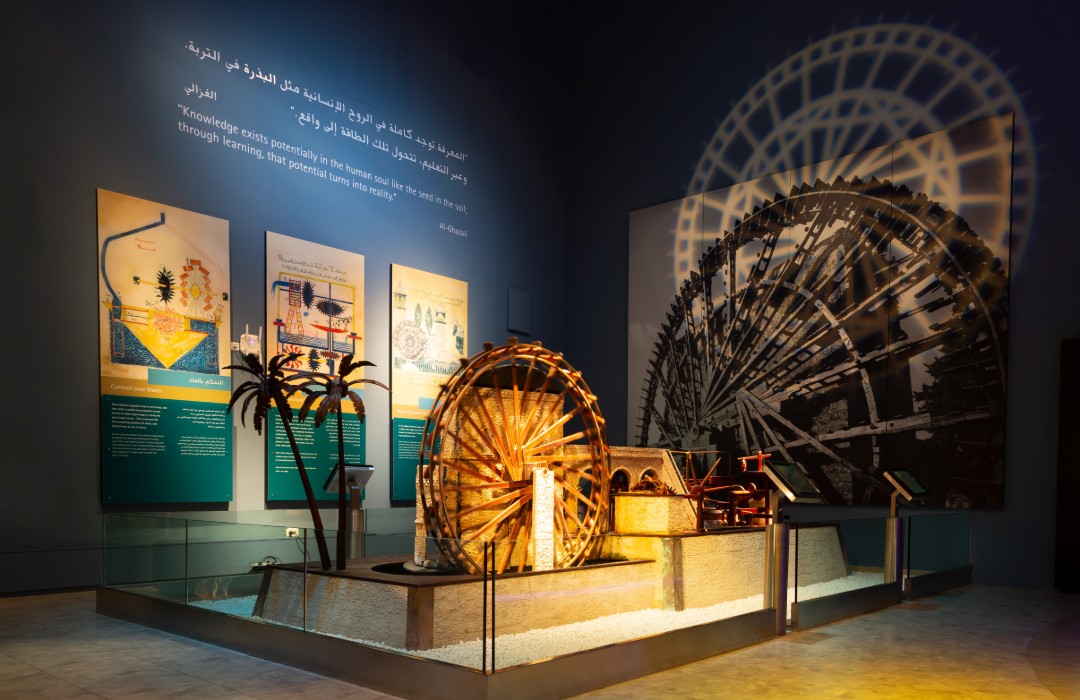
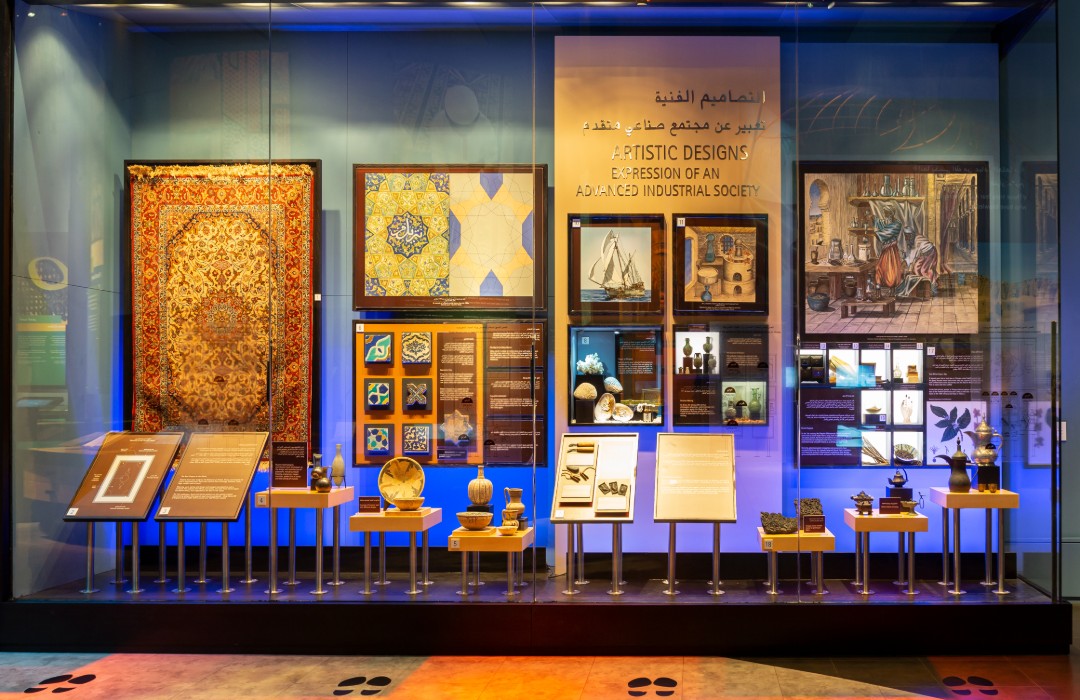
This large cabinet displays materials that were traded and products that were produced by early Muslim technologists, including carpets, ceramics, tiles, geometric designs, pearls, perfumes, henna, wooden printing blocks, oil lamps and coffee kettles.
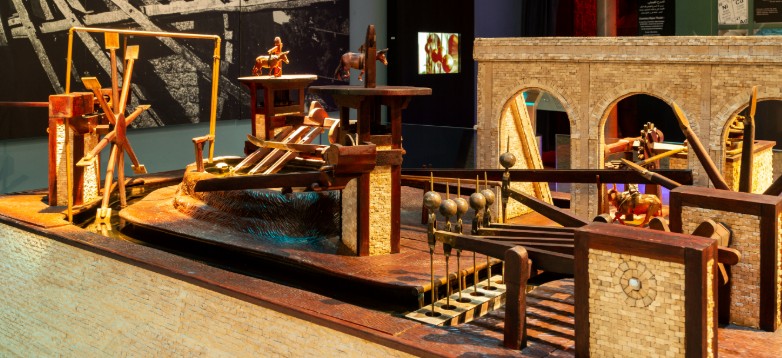
Most Muslim people lived in arid lands where the use and control of water was essential to their survival. This video reviews the many significant advances that they made in water engineering.
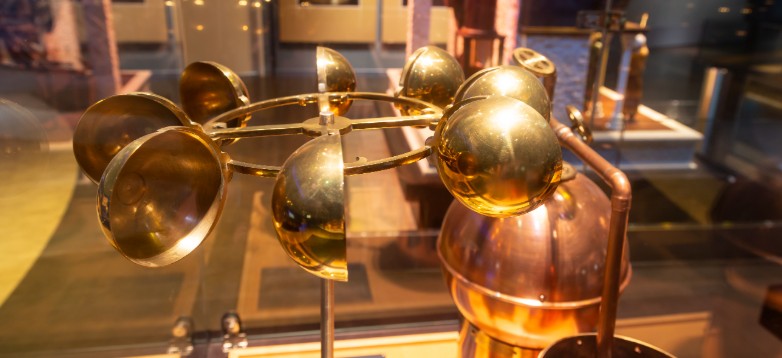
Taqi al-Din’s Steam Turbine is an advanced version of a turbine first made by Hero of Alexandria.
This large scale model shows how a vertical-vane wind mill was used to grind corn.
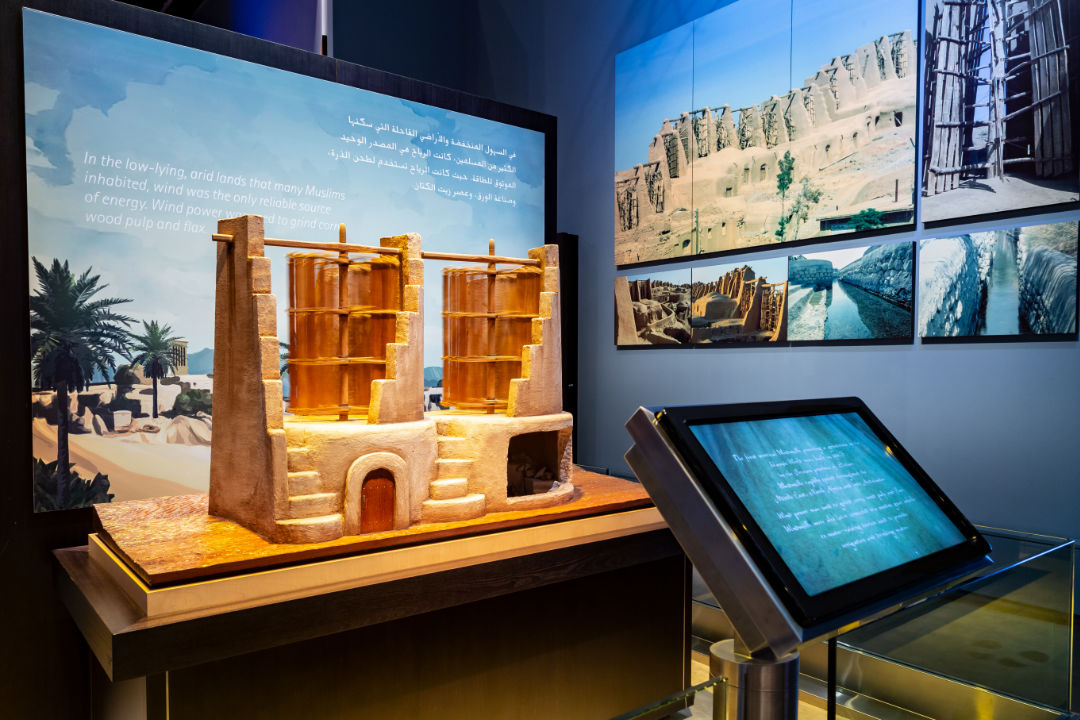
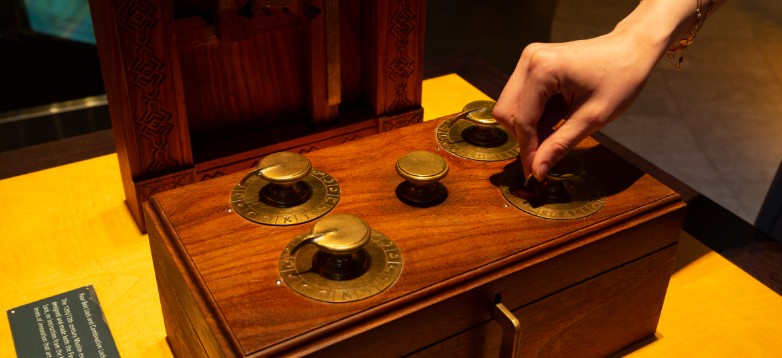
In addition to his iconic water clocks, al-Jazari made many, small useful devices for the Kings of Diyarbakr. This display shows his Combination Lock and Four-Bolt Door Lock.
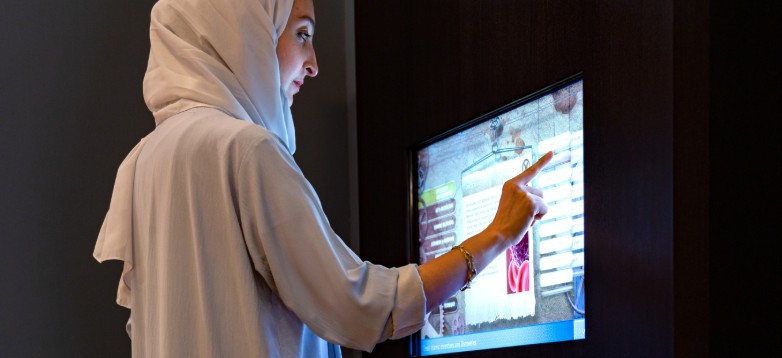
In this interactive touch screen display a wide variety of inventions and discoveries made by Muslim scholars is reviewed
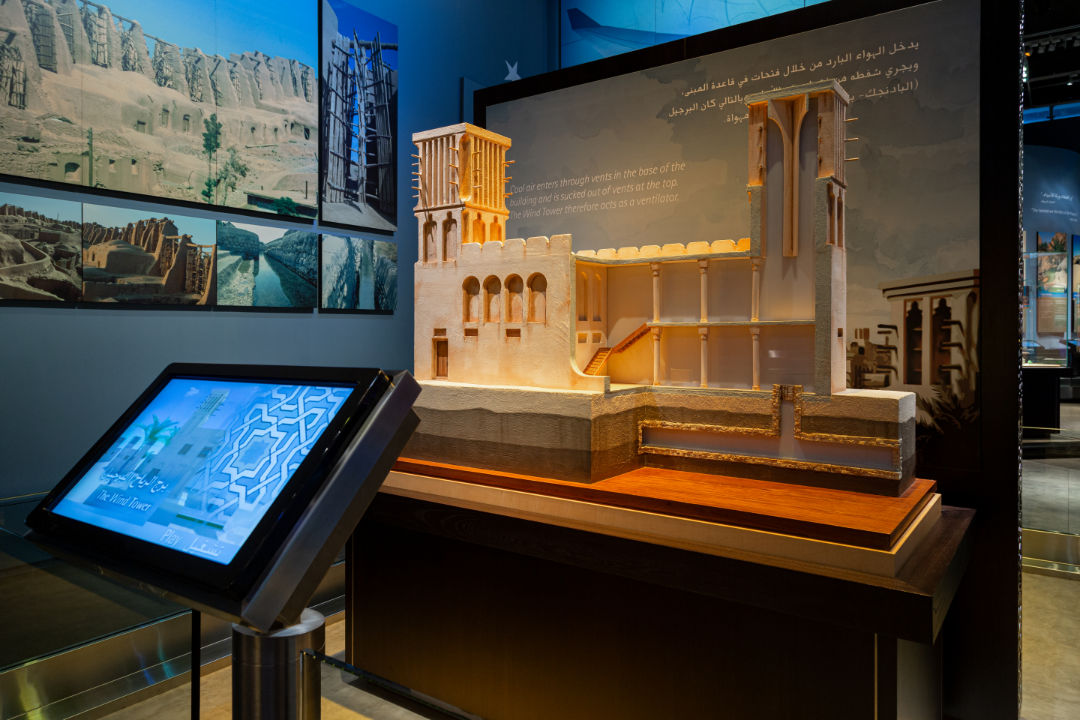
This large scale model shows how natural forces (the wind and cool water) were used to cool a building before modern air conditioners were invented.
The Balance-Clepsydra looks like a weighing machine but is used to measure the passage of time.
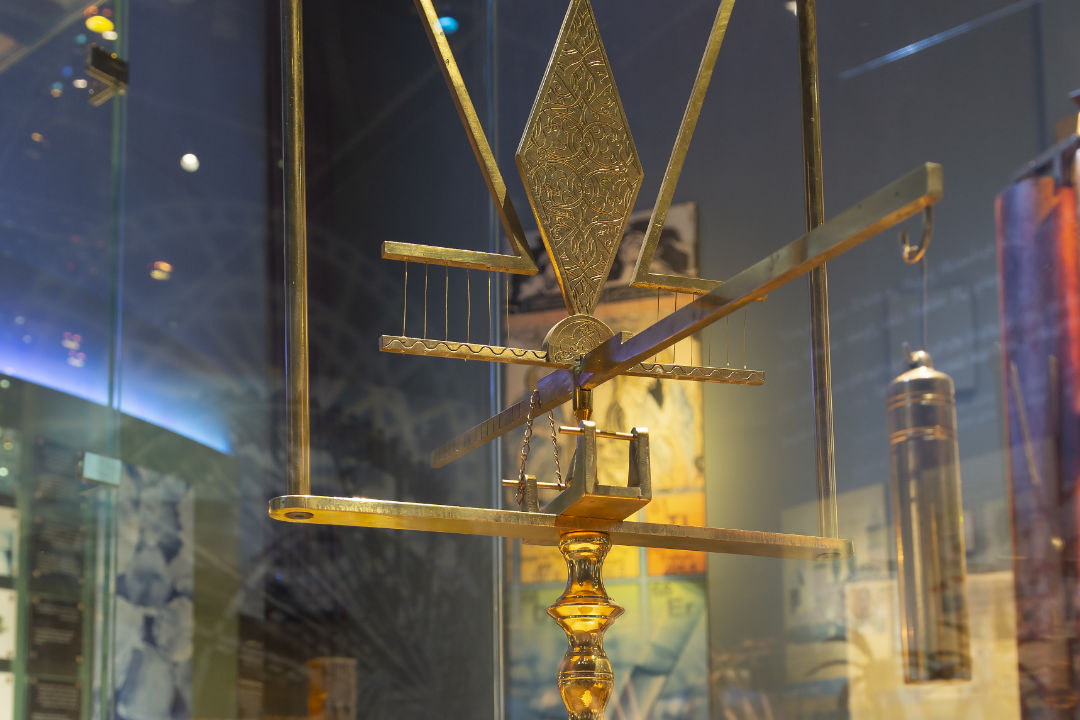
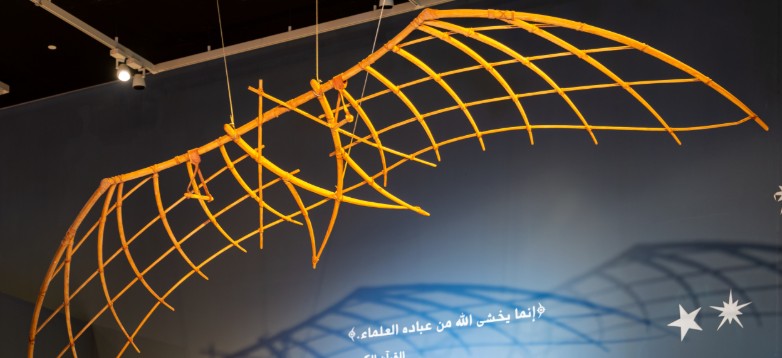
This video showcases some of the important contributions to the development of aviation made by early Muslim aviators.
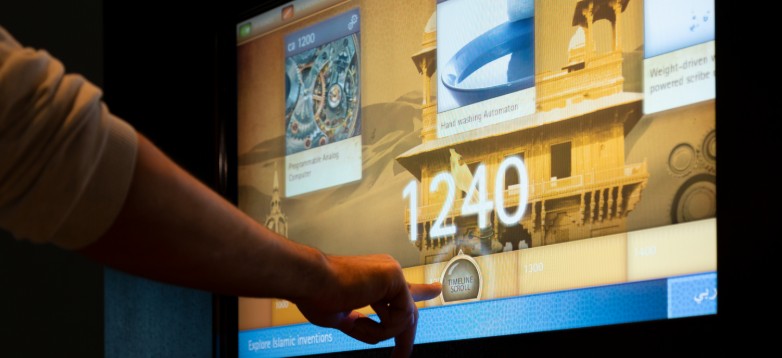
Inventions and discoveries by Muslim scholars are presented in this display along a chronological time line.